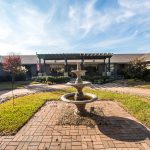Safety and emergency preparedness has always been an important part of nursing home operations. Every facility in the US is mandated to have some type of emergency plan and certain emergency equipment in place. However, Cambridge Realty President Jeffrey Davis notes that, in light of recent catastrophic events, “the ability of a facility to respond to a major emergency is more important than ever.”
When hurricane Katrina hit New Orleans in 2005, its ferocity took everyone by surprise, including nursing home operators. Public outcry was swift and boisterous over the plight of elderly nursing home residents who sat, immobile, waiting for help that never arrived while flood waters slowly drowned them.
What many members of the public didn’t realize was that nursing home operators did have disaster plans in place. The problem was that many of their plans were woefully inadequate against the enormous and unprecedented scale of Katrina’s storm. Some buses that were to transport seniors to safety never arrived. Some that did arrive were not able to accommodate wheelchairs, beds and other medical equipment. For elderly nursing home residents who did manage to be evacuated, some were simply physically or emotionally overwhelmed by the situation.
What the Katrina storm demonstrated was a profound need for senior living and nursing home stakeholders to re-evaluate their readiness to provide a safe haven for residents in the event of a catastrophic weather event. All indicators, particularly global warming, point to a future increase in both the number of annual weather disasters as well as their intensity and scope, so the need is especially critical and urgent.
Of course, the vast majority of nursing homes in the US aren’t in hurricane-prone regions. However, every region has its own unique climate and geographical challenges, from tornadoes to earthquakes to annual wildfires. Even terrorist threats or acts can affect a senior facility in any location in the US. Davis expects that conversation around the topic of nursing home resilience will increase in the coming years. In fact, a particular facility’s resilience may become “one of the top criteria family members will consider when selecting a facility to place a loved one in,” according to Davis.
A nursing home’s ability to adequately provide for the safety, wellbeing and health of all of its residents before, during and immediately after a catastrophic weather event is known as “resilience.” According to research, the elderly are at the greatest risk of injury and death from a catastrophic weather event than all other population groups. Therefore, increasing a nursing home’s resilience may reduce the number of storm-related injuries and deaths among seniors. This includes not just deaths directly caused by weather (i.e. drowning) but also deaths in the days following a weather event due to disruption of care and/or lack of access to the basic necessities of life.
Senior living and nursing home developers are coming up with creative ways to address emergency preparation using building design. For example, one Florida senior community has a clubhouse that was designed to double as a Category 5 storm shelter for residents.
However, the idea of resilience goes beyond building storm-resistant housing. Stakeholders must consider a variety of potential disaster scenarios, including storms, floods, earthquakes, fires and even, possibly, terrorist or hostage situations.
In fact, it may be impossible to predict every possible scenario. Nevertheless, disasters like Katrina, Hurricane Florence and other more recent weather events have clearly highlighted the need for better, more thorough preparation.
Davis advises families of seniors to be proactive in finding out what emergency/contingency plans are in place at their loved one’s facility or facility they are considering. They should pay special attention to plans regarding weather events and natural disasters that are possible or likely to occur in a facility’s region.
Every state, county and/or municipality has mandatory regulations for preparing and implementing nursing home/senior facility emergency plans and procedures. They may differ slightly from state to state or region to region. However, they will largely be similar in most areas. Make sure your loved one’s facility is in compliance with these regulations and check into its safety and compliance history. Finally, even if a facility seems to be fully compliant with local regulations, but if you feel uneasy about potential emergencies that haven’t been addressed, don’t be afraid to ask questions. “The more discussion that is generated, the better for everyone concerned,” says Davis.




